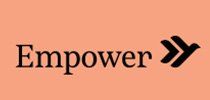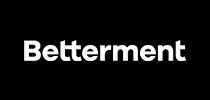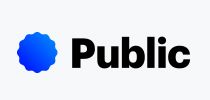How To Invest Some Money To Gain
Investing even very small amounts can reap big rewards. Here are 7 ways you can start investing with little money today.
For many people, the word "investing" conjures up images of men in suits, monitoring the exchange of millions of dollars on a stock ticker.
I'm here to tell you: You don't need to be the Wolf of Wall Street to start investing. It's okay if you're more of a mouse of Main Street. Even if you only have a few dollars to spare, your money will grow with compound interest.
The key to building wealth is developing good habits—like regularly putting money away every month. Swap out the barista-made cappuccinos for coffee at home and you could already be saving more than $50 a month.
Once you have a little money to play with, you can start to invest.
In 2021, you can get a date, a ride or a pizza with the swipe of a smartphone screen. Investing is no different. If you can automate your bills, why not your investments? It's just as easy.
With a robo-advisor or savings account, you can make your money work while you play. With a stock trading app, you can play with a little money and learn valuable investing lessons at the same time. Just like Halloween costumes, investing comes in many different forms. It shouldn't be a scary word.
With so many different options, investing for beginners is simpler and more straightforward than ever before.
Soon you'll see how addictive growing your money can be.
Here are seven simple ways to get there:

Saving money and investing it are closely connected. In order to invest money, you first have to save some up. That will take a lot less time than you think, and you can do it in very small steps.
If you've never been a saver, you can start by putting away just $10 per week. That may not seem like a lot, but over the course of a year, it comes to over $500.
Try putting $10 into an envelope, shoebox, a small safe, or even that legendary bank of first resort, the cookie jar. Though this may sound silly, it's often a necessary first step. Get yourself into the habit of living on a little bit less than you earn, and stash the savings away in a safe place.
The electronic equivalent of the cookie jar is the online savings account; it's separate from your checking account. The money can be withdrawn in two business days if you need it, but it's not linked to your debit card. Then when the stash is large enough, you can take it out and move it into some actual investment vehicles.
Start with small amounts of money, and then increase as you get more comfortable with the process. It may be a matter of deciding not to go to McDonald's or passing on the movies, and putting that money into the cookie jar instead.
Chime currently offers a strong 0.50% APY for their online savings account. There is no minimum deposit required and the yield is earned on all balances (no minimum balance required).
currently offers a strong 0.50% APY for their online savings account. There is no minimum deposit required and the yield is earned on all balances (no minimum balance required).
Chime is also a top choice for your savings because they include a bevy of other features that really focus on the individual saver.
- 38,000 fee free ATM's
- Spot Me feature that means you won't be charged an overdraft fee if you overdraw your balance
- Direct deposit that gets you paid 2 days faster
And if you need a little boost to start saving while earning your APY, Chime can round up your purchases to the nearest $1 to help you save faster and earn faster.
Learn more about Chime or read our full review.
Chime Disclosure - Chime is a financial technology company, not a bank. Banking services provided by, and debit card issued by, The Bancorp Bank or Stride Bank, N.A.; Members FDIC.

You can also ensure your checking account brings some extra money in. OnJuno offers an impressive 1.20% Bonus on your deposits. The Bonus Rate is credited to your online checking account on the first of every month and only applies to balances up to $5,000. Balances from $5,000 to $100,000 earn 0.25% (an important note: this bonus is subject to change at any time).
Here are a few features that make OnJuno stand out.
- Earn 5% cash back on your spending with five brands that you choose. Brands include popular retailers like Walmart, Target, and Starbucks. Basic account holders get 5% cash back on up to $500 in purchases each year, equal to $25 per year. But if you upgrade to a Metal Membership, you'll get 5% cash back on up to $3,000 per year, earning you as much as $150 per year.
- No hidden fees or opening balance requirements.
- Fee-free cash withdrawals at 85,000 AllPoint and MoneyPass ATMs.
With OnJuno's fee-free model, you won't be spending unnecessary money on service fees and out-of-network ATM charges.
Learn more about OnJuno.

If you're looking for automatic savings with budgeting built-in, Empower is another great option. You'll get a slick Automatic Savings feature. Simply tell Empower your savings goals, and Empower will automatically transfer small amounts of money over to savings, without you having to lift a finger.
In addition to Automatic Savings, Empower offers a few other features that will help you manage your money.
- Empower AutoSave will automatically adjust the amount being transferred to savings based on your expenses and account balances. So, when your expenses are higher, Empower will automatically save less.
- With the Empower Card, you can request a Cash Advance of up to $250¹ when you need a little extra money. There are no credit checks required, and you won't have to worry about paying interest or late fees. You'll also get up to 10% cashback* on purchases and access to your paycheck up to two days early.*
- Budgeting tools and recommendations help you get out of debt and stay there.
Pair these features with Empower Spend Trackers that help you make sure you're not overspending in the categories of your choice, and Empower really becomes your one-stop-shop for managing your money.
Empower is a financial technology company, not a bank. Banking services provided by nbkc bank, Member FDIC.
Learn more about Empower or read our full review.
2. Let a robo-advisor invest your money for you

Robo-advisors entered the investing scene about a decade ago and make investing as simple and accessible as possible. You don't need any prior investing experience, as robo-advisors take all of the guesswork out of investing.
Robo-advisors work by asking a few simple questions to determine your goal and risk tolerance and then investing your money in a highly-diversified low-cost portfolio of stocks and bonds. Robo-advisors then use algorithms to continually rebalance your portfolio and optimize it for taxes.
There's no easier way to get started in long-term investing. Most robo-advisors require just $500 or less to start investing and charge very modest fees based upon the size of your account. All offer automated investing plans to help you grow your balance.
If there's any downside to Robo-advisors it's cost. Robo-advisors charge an annual fee equal to a small percentage of your balance. The industry average is about 0.25%. So, if you invest $10,000, you'll pay $25 a year. That's not a lot of money, but it begins to add up if you amass hundreds of thousands of dollars.
It's important to note that robo-advisors fees are on top of the fees charged by the exchange-traded funds (ETFs) that robo-advisors buy to make up your portfolio. You can avoid paying the robo-advisor fees by building your own portfolio of ETFs or mutual funds. For the vast majority of investors, however, that's a lot of additional work and responsibility.
The bottom line? Robo-advisors are cheap and well worth it.
Wealthfront
 A robo-advisor that I highly recommend to first-time investors is Wealthfront. Their fees are reasonable at 0.25%, but the kicker is that you can get your first $5,000 managed free (specific to MU30 readers).
A robo-advisor that I highly recommend to first-time investors is Wealthfront. Their fees are reasonable at 0.25%, but the kicker is that you can get your first $5,000 managed free (specific to MU30 readers).
So if you're looking to start investing with little money, Wealthfront could be the way to go. You will need $500 to get started though with Wealthfront so keep that in mind.As you get more comfortable with investments, you can pick and choose vetted ETFs or invest by category, like tech, healthcare, and even socially responsible investing.
Learn more about Wealthfront or read our full review.
M1 Finance
 If you don't have that $500 starting balance, there are still great options for you in the Robo-advising space. M1 Financecharges no commissions or management fees, and their minimum starting balance is just $100.
If you don't have that $500 starting balance, there are still great options for you in the Robo-advising space. M1 Financecharges no commissions or management fees, and their minimum starting balance is just $100.
You can choose from one of their pre-made diversified portfolios or customize your own by purchasing stocks and ETFs through their platform. The user interface is super easy to use.
Learn more about M1 Finance or read our full review.
Betterment
 If you're starting out with less than $100, you may want to consider Betterment , which has no minimum starting balance whatsoever. Like M1, it's also great for beginners as it provides a super simple platform and a hassle-free approach to investing. Plus, you'll pay just 0.25% as a management fee.
If you're starting out with less than $100, you may want to consider Betterment , which has no minimum starting balance whatsoever. Like M1, it's also great for beginners as it provides a super simple platform and a hassle-free approach to investing. Plus, you'll pay just 0.25% as a management fee.
Learn more about Betterment or read our full review.
Acorns
 If you've got some spare change to invest, Acorns' Round Up feature allows you to "round up" your purchases to the nearest dollar and automatically invest the difference. Your money will go into an expertly created ETF portfolio.
If you've got some spare change to invest, Acorns' Round Up feature allows you to "round up" your purchases to the nearest dollar and automatically invest the difference. Your money will go into an expertly created ETF portfolio.
After setting up your account and linking a card, you don't have to lift a finger! The Acorns app is a good pick for beginner investors looking to understand what they're investing in. Acorns has also partnered with CNBC to provide financial literacy content to help out newbies.
Learn more about Acorns or read our full review.
3. Start investing in the stock market with little money

When it comes to investing in the stock market, cost is often the barrier to entry. It takes money to make money, right?
Not anymore. The internet has made it easy for consumers to get started with very little upfront money. That means you can put a few dollars in to familiarize yourself with investing before making a bigger commitment. It's a great way to learn about investing while putting very little money at risk.
Today, there are increasing numbers of options that have swung open doors to a new generation of investors – letting you get started with as little as $1 and charges no trade commissions.
In the past, stockbrokers charged commissions of several dollars every time you bought or sold stock. That made it cost-prohibitive to invest in even a single stock with less than hundreds or thousands of dollars. In fact, $0 commissions across comp have been so successful they've disrupted the entire investing industry and forced all the major brokers – from E*TRADE to Fidelity – to follow suit and drop trading commissions.
Plus the ability to invest in companies with fractional/partial shares is a complete game-changer with investing. With fractional shares, it means you can diversify your portfolio even more while saving money. Instead of investing in a full share, you can buy a fraction of a share. If you want to invest in a high-priced stock like Apple, for instance, you can do so for a few dollars instead of shelling out the price for one full share, which, as I write this, is around $370.
J.P. Morgan Self-Directed Investing

If you're willing to do a little leg-work on your own, J.P. Morgan Self-Directed Investing can offer you no-fee investing with unlimited $0 trades. If you're a DIYer, you'll love that you can manage your investments from both the Chase Mobile® app and Chase's site.
You'll have the option to invest in stocks, ETFs, mutual funds, options, and fixed income and you won't pay any commission on most of those as well. And while you're at it, if you're looking to invest specifically for retirement (which you really should), you can opt for traditional or Roth IRAs.
If you really don't like the idea of having to manage everything yourself, J.P. Morgan Automated Investing offers a robo-advisor for just a 0.35% advisory fee (which is somewhat low compared to the competition). The only thing you'll need is $500 to invest.
Learn more about J.P. Morgan Self-Directed Investing or read our full review.
Disclosure – INVESTMENT PRODUCTS: NOT A DEPOSIT • NOT FDIC INSURED • NO BANK GUARANTEE • MAY LOSE VALUE
Public
Public , an investing app, offering thousands of stocks and ETFs with no commission fees on trades and no account minimums. With Public, you canpurchase most stocks through what Public calls "Slices"- so you don't have to plunk down thousands of dollars to become a shareholder in huge companies that you want to invest in but cannot otherwise afford.
, an investing app, offering thousands of stocks and ETFs with no commission fees on trades and no account minimums. With Public, you canpurchase most stocks through what Public calls "Slices"- so you don't have to plunk down thousands of dollars to become a shareholder in huge companies that you want to invest in but cannot otherwise afford.
Public makes investing easy and user friendly: you simply pick your stocks and ETFs, enter the amount of money you'd like to invest, and Public "slices" off a portion of a share to fit the amount you've chosen.
Public also offers a social investing experience making it a great option for beginner investors. You become more financially literate while watching what others are doing with their investments. It's like peeking into someone's investing account for ideas – but it's what everyone is doing and totally legit.
Learn more about the Public App or read our full review.
Robinhood
Robinhood is also designed for young traders new to investing, and Robinhood is currently rolling out fractional share investing to make it easy to start investing with little money.
is also designed for young traders new to investing, and Robinhood is currently rolling out fractional share investing to make it easy to start investing with little money.
And the best part? Robinhood gives you one free stock just for joining. That gives your portfolio a small headstart at no cost to you.
Importantly, Robinhood promotes equality of access with a $0 account minimum and no transaction fees. Robinhood also has free options trading. Users who opt for the premium account Robinhood Gold pay $5 a month for access to extra perks like after-hours trading.
Unlike robo-advisors, Robinhood supports and encourages active stock trading. In my mind, trading stocks is not the same thing as investing money for the long-haul. But trading is fun and a great way to learn about how the market works and how companies are valued. And if you can try your hand at trading with small amounts of money, it's even better.Robinhood's platform makes trading a snap.
Learn more about the Robinhood App or read our full review.
Advertiser Disclosure – This advertisement contains information and materials provided by Robinhood Financial LLC and its affiliates ("Robinhood") and MoneyUnder30, a third party not affiliated with Robinhood. All investments involve risk and the past performance of a security, or financial product does not guarantee future results or returns. Securities offered through Robinhood Financial LLC and Robinhood Securities LLC, which are members of FINRA and SIPC. MoneyUnder30 is not a member of FINRA or SIPC."
4. Dip your toe in the real estate market

Believe it or not, you no longer need a lot of money (or even good credit) to invest in real estate. A new category of investment known familiarly as "real estate crowdfunding" makes it possible to own fractional shares of large commercial properties without the headache of being a landlord.
Crowdfunded real estate investments require larger minimum investments than robo-advisors (for example, $5,000 instead of $500). They're also riskier investments because you'll be putting that entire $5,000 into one property rather than a diversified portfolio of hundreds of individual investments.
The upside is owning a piece of a real physical asset that's not necessarily correlated with the stock market.
As with robo-advisors, investing in real estate via a crowdfunding platform carries costs that you wouldn't pay if you bought a building yourself. But here, the advantages are obvious: You share the cost and risk with other investors and you have no responsibility for maintaining the property (or even doing the paperwork to buy it!)
I think real estate crowdfunding can be an intriguing way to learn about commercial real estate investing and also diversify your assets. I wouldn't lay all of my money on these platforms, but they do make an intriguing alternative investment especially in these times of unprecedented market volatility and pitiful bond yields.
 WithFundrise's really easy-to-use online platform, you simply need a starting minimum investment of $500. So if you're an unaccredited investor, you can buy properties without paying those very large fees that end up being a deal-breaker if you want to start dabbling in real estate. By managing your own portfolio, the fees come to just 1% andFundrise always offers a 90 days satisfaction guarantee.
WithFundrise's really easy-to-use online platform, you simply need a starting minimum investment of $500. So if you're an unaccredited investor, you can buy properties without paying those very large fees that end up being a deal-breaker if you want to start dabbling in real estate. By managing your own portfolio, the fees come to just 1% andFundrise always offers a 90 days satisfaction guarantee.
Learn more abour Fundrise or read our full review.
 Like Fundrise, DiversyFund also allows you to invest in real estate with as little as $500. With zero management fees and no net worth requirement, the company is dedicated to making investing in real estate affordable and accessible for everyone, not just the top 1%. DiversyFund also features plenty of educational resources to help you learn more about real estate investing and gain the tools you need to grow your wealth.
Like Fundrise, DiversyFund also allows you to invest in real estate with as little as $500. With zero management fees and no net worth requirement, the company is dedicated to making investing in real estate affordable and accessible for everyone, not just the top 1%. DiversyFund also features plenty of educational resources to help you learn more about real estate investing and gain the tools you need to grow your wealth.
Learn more about DiversyFund or read our full review.
5. Enroll in your employer's retirement plan
If you're on a tight budget, even the simple step of enrolling in your 401(k) or other employer retirement plan may seem beyond your reach. But you can begin investing in an employer-sponsored retirement plan with amounts so small you won't even notice them.
This is one step that everybody should take!
For example, plan to invest just 1% of your salary into the employer plan.
You probably won't even miss a contribution that small, but what makes it even easier is that the tax deduction that you'll get for doing so will make the contribution even smaller.
Once you commit to a 1% contribution, you can increase it gradually each year. For example, in year two, you can increase your contribution to 2% of your pay. In year three, you can increase your contribution to 3% of your pay, and so on.
If you time the increases with your annual pay raise, you'll notice the increased contribution even less. So if you get a 2% increase in pay, it will effectively be splitting the increase between your retirement plan and your checking account. And if your employer provides a matching contribution, that will make the arrangement even better.
Blooom  is a great tool for hands-off investment management of your 401(k). They'll give you a free 401(k) analysis, telling you where and how they can optimize your investments.
is a great tool for hands-off investment management of your 401(k). They'll give you a free 401(k) analysis, telling you where and how they can optimize your investments.
Learn more about blooomor read our full review.
Andblooom has got a special promotion right now:Get $15 off your first year of blooom with code BLMSMART
6. Put your money in low-initial-investment mutual funds

Mutual funds are investment securities that allow you to invest in a portfolio of stocks and bonds with a single transaction, making them perfect for new investors.
The trouble is many mutual fund companies require initial minimum investments of between $500 and $5,000. If you're a first-time investor with little money to invest, those minimums can be out of reach. But some mutual fund companies will waive the account minimums if you agree to automatic monthly investments of between $50 and $100.
Automatic investing is a common feature with mutual fund and ETF IRA accounts. It's less common with taxable accounts, though its always worth asking if it's available. Mutual fund companies that have been known to do this include Dreyfus, Transamerica, and T. Rowe Price.
An automatic investing arrangement is particularly convenient if you can do it through payroll savings. You can typically set up an automatic deposit situation through your payroll, in much the same way that you do with an employer-sponsored retirement plan. Just ask your human resources department how to set it up.
Read More: How To Buy A Mutual Fund
7. Play it safe with Treasury securities
Not many small investors begin their investment journey with US Treasury securities, but you can. You'll never get rich with these securities, but it is an extremely safe place to park your money—and earn at least some interest—until you are ready to go into higher risk/higher return investments.
Treasury securities, also known as savings bonds, are easy to buy through the US Treasury's bond portal Treasury Direct. There you can buy fixed-income US government securities with maturities of anywhere from 30 days to 30 years in denominations as low as $100.
You can also use Treasury Direct to buy Treasury Inflation Protected Securities, or TIPS. These not only pay interest, but they also make periodic principal adjustments to account for inflation based on changes in the consumer price index.
And as is the case with mutual funds, you can also arrange to have your Treasury Direct account funded through payroll savings.
Unfortunately, the yields on treasuries have been getting closer and closer to 0% for a while now, and there's no end in sight to their lackluster performance. This makes treasuries mostly a place to stash cash for safekeeping rather than a way to grow your money.
Summary
There are plenty of ways to start investing with little money, with many online and app-based platforms making it easier than ever. All you have to do is start somewhere. Once you do, it will get easier as time goes on, and your future self will love you for it.
Empower Disclosure - ¹ Eligibility requirements apply.
* Early access to paycheck deposit funds depends on the timing of the employer's submission of deposits. Empower generally posts such deposits on the day they are received which may be up to 2 days earlier than the employer's scheduled payment date. Cashback deals on Empower Card purchases, including categories, merchants, and percentages, will vary and must be selected in the app. Cashback will be applied automatically when the final transaction posts, which may be up to a week after the qualifying purchase.
Read more
- Best Investment Accounts For Young Investors
- Start now! The Beginner's Guide To Saving For Retirement
- 10 Tips To Help You Start Investing
- How To Invest In The Stock Market – Our Complete Guide
How To Invest Some Money To Gain
Source: https://www.moneyunder30.com/start-investing-with-little-money
Posted by: eatonbothe1945.blogspot.com



0 Response to "How To Invest Some Money To Gain"
Post a Comment